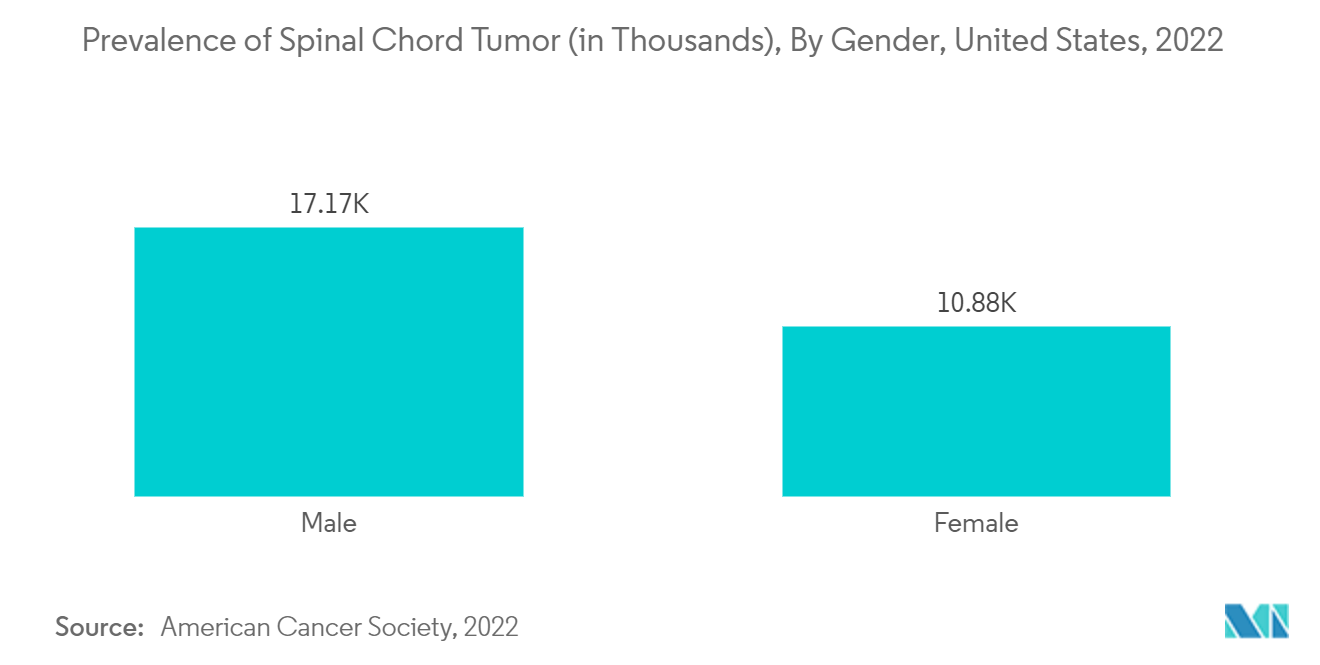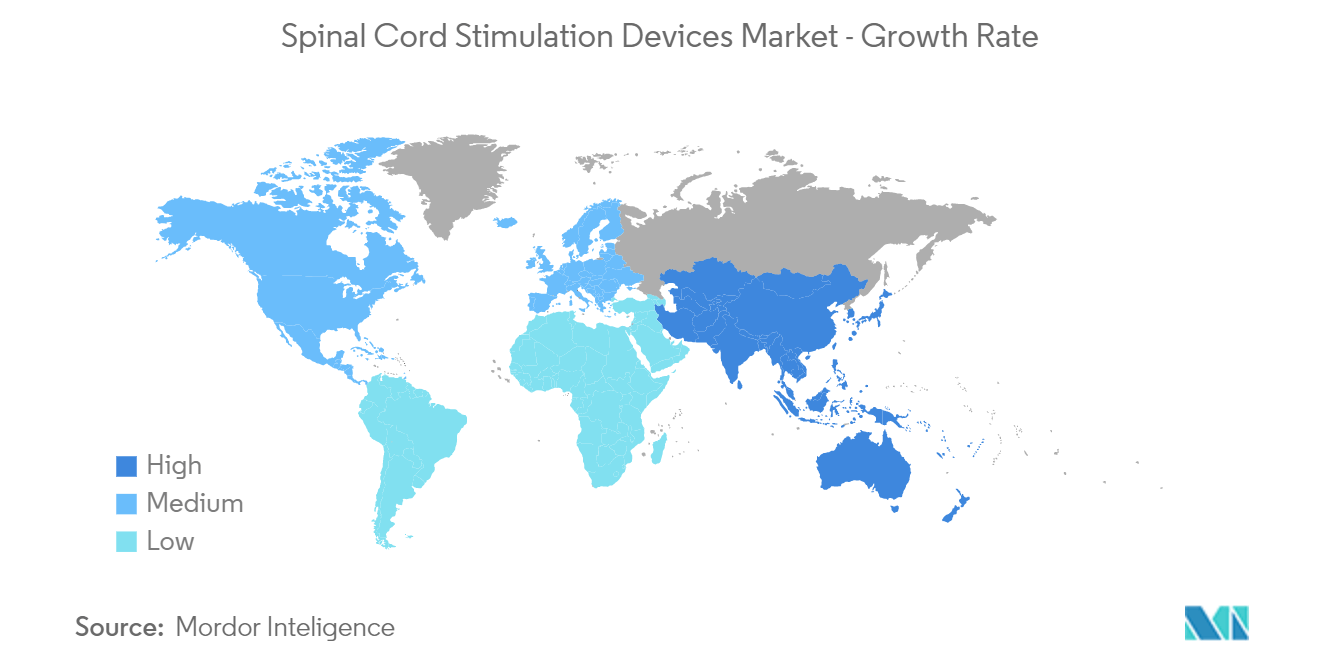Market Trends of Global Spinal Cord Stimulation Devices Industry
Degenerative Disk Disease Segment is Expected to Hold a Significant Market Share Over the Forecast Period
Degenerative disc disease (DDD) is a condition where one or more discs in the spine deteriorate due to age, which results in back or neck pain. Factors such as increasing prevalence and product approvals are driving the growth of this segment.
Various research studies have been published on degenerative disc diseases. For instance, in February 2022, a research study published titled "Lumbar Degenerative Disk Disease" stated that most intervertebral disc degenerations are asymptomatic, making a true understanding of the prevalence difficult. The same source stated that, due to the lack of uniformity in the definitions of disc degenerations and disc herniations, the actual prevalence of the disease is difficult to review across multiple studies. In a meta-analysis of 20 studies evaluating the magnetic resonance imaging (MRI) of asymptotic individuals, the reported disc abnormalities at any level were: 20% to 83% for a reduction in signal intensity, 10% to 81% for disc bulges, 3% to 63% for disc protrusion (versus 0% to 24% for disc extrusion), 3% to 56% for disc narrowing, and 6% to 56% with annular tears.
Similarly, another research published in August 2021, titled "Cervical Degenerative Disc Disease," stated that similar to the lumbar spine, cervical disc degeneration is a naturally occurring age-related phenomenon. The same source stated that the prevalence of cervical DDD increases with age regardless of the patient's symptomatology. A quarter of patients less than the age of 40 showed evidence of disk degeneration or narrowing at one level. This evidence was found in about 60% of patients in the same population who were greater than 40 years old. Hence, the prevalence of DDD is common and will increase in the upcoming future.
Clinical trials are another factor in the growth of the market. For instance, in February 2021, Mesoblast Limited, one of the global leaders in allogeneic cellular medicines for inflammatory diseases, received feedback from the United States Food & Drug Administration's (FDA) Office of Tissues and Advanced Therapies (OTAT) on the Phase III program of rexlemestrocel-L in patients with chronic low back pain (CLBP) due to degenerative disc disease (DDD) refractory to available therapies, including opioids. Such clinical trials increase the innovation in the market, which increases the growth of the market in the upcoming future. Hence, due to the abovementioned factors, the market is likely to grow in the future.

North America is Expected to Dominate the Market Over the Forecast Period
The key factors propelling the market studied are increasing spinal cord injuries (SCI), product launches, and research studies in the region.
Various research studies have provided insight into the epidemiology of spinal cord injury (SCI) in the North American region. For instance, in 2021, a research study published titled "Development of the Canadian Spinal Cord Injury Best Practice (Can-SCIP) Guideline: Methods and overview" stated that the available SCI-specific clinical practice guidelines (CPG) address specific impairments, health conditions, or a segment of the care continuum, however, fail to address all the important clinical questions arising throughout an individual's care journey. To address this gap, an interprofessional panel of experts in SCI convened to develop the Canadian Spinal Cord Injury Best Practice (Can-SCIP) Guideline. Hence, standard guidelines could provide better methods to increase the treatment outcomes, which would increase the adoption of spinal cord stimulation devices due to a higher success rate.
Product launches are another factor in the growth of the region. In January 2021, Boston Scientific reported a limited market release of the WaveWriter Alpha portfolio of Spinal Cord Stimulator (SCS) systems. The unified portfolio of four MRI conditional, Bluetooth-enabled rechargeable, and non-rechargeable implantable pulse generators (IPGs) provides uncompromised personalization, and for the first time in SCS, Fast Acting Sub-perception Therapy (FAST) is designed to deliver profound paresthesia-free pain relief in minutes. Such product launches would increase the market growth in the region.
Product approval is another factor in the growth of the market. For instance, in July 2021, Food and Drug Administration (FDA) approved Senza Spinal Cord Stimulation (SCS) System. It is an implanted, rechargeable spinal cord stimulation system intended to treat long-term (chronic) pain in the trunk or limbs that is difficult to manage.
Hence, the abovementioned factors would increase market growth in the upcoming future.

